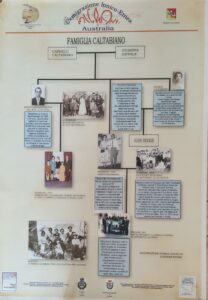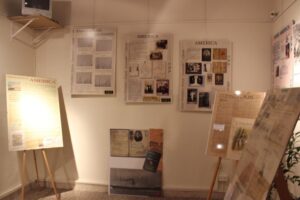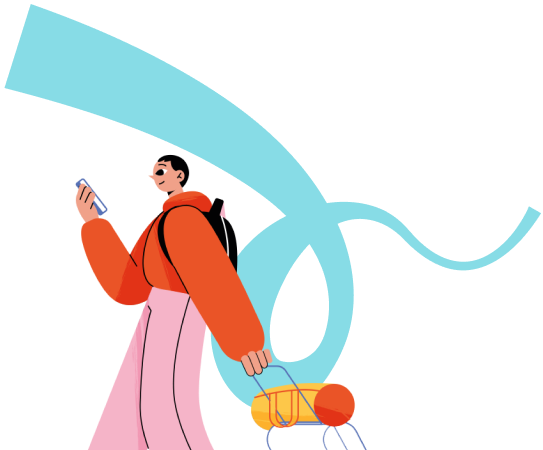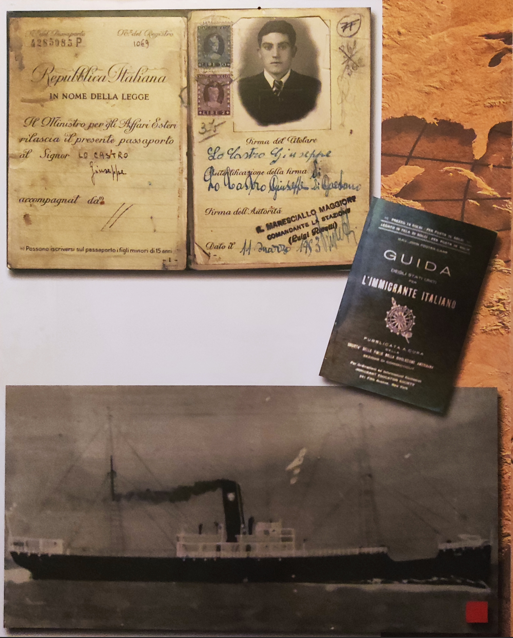The experience

Born from a research by the students of the “Leonardo” Scientific High School in Giarre,
since 2008 it has been housed in the municipal premises of the Palazzo delle Culture.
The museum itinerary offers the visitor:
A first section, dedicated to the peasant reality of the late nineteenth century which sees
men, women and children leave following the destruction of the vineyards due to the
phylloxera, which has affected Catania since 1887 and in the following years the expanses
wineries at the foot of Mount Etna;
The presentation of the causes of departures, endogenous and exogenous, introduces the
characteristics of the emigration movement in the three phases of the process during the
Nine hundred;
The sections dedicated to the destinations reached by migrants in the area, with
stories and testimonies accompanied by documents;
horizontal display cases with institutional and private documentation on the exodus
migratory from the hinterland;
The immigration section, which closes the descriptive itinerary of the museum
narrator with the space dedicated to the new migrants present in the territory today
Etna.
The Etna Museum of Migration is housed in the premises of the Municipality of Giarre and inserted
in the Network of Sicilian Museums of Emigration (referent for scientific research,
prof. Grazia Messina).
To old documents found in the drawers and closets of the house, were added in the
institutional documents, personal and family stories, objects donated by
private individuals testifying to the exodus from the territory.
The museum itinerary leads to
understand why and when so many Sicilians, and in particular the inhabitants of the area
Ionian-Etna, they became MIGRANTS, where they moved and how it has changed,
after departure, their lives.
Since migrations always have two directions,
inside the museum there is a space dedicated to IMMIGRATION on the island.
At it
In short, we try to tell a past that appears in the
present, to understand how we can better face the future that awaits us.
The
Museum is constantly integrated and enriched with new documents, both public and
and private on the migration experience.
DISPLAY CASES
In the museum some display cases preserve documents from the historical archive
of Giarre of the early twentieth century that help to know the quantity of passports
issued, the way in which one could buy a ticket for boarding ships
directed to America, the decisions that were taken by the authorities who had the
task of controlling departures from the island.
There is no shortage of personal stories and
collected through research and interviews over the years, including a project
school and historical workshops.
CAUSES AND DEPARTURES
At the end of the nineteenth century, phylloxera, a pathogen of the vine, destroyed entire
vineyards first in France and finally also in Sicily.
Poverty spreading on the island
promotes the sale of tickets to the Americas by the
navigation, which encourage Sicilians to leave to make their fortune in the New
Continent on the new steamships.
Thus the American dream takes shape, with
the hope for a better life and the prospect of radical change for themselves and
for their family.
From Syracuse and Catania you could reach the
port of Messina, but also that of Palermo and Naples, and from there get on a ship
bound for New York or Buenos Aires.
Between 1861 and 1985, statistics speak of about
30 million Italians have emigrated abroad, of which 22,253,000 men and 6,780,000 women.
About 10,275,000 returned, with a net migration of 18,761,000 units.
Today
Almost five million Italian citizens and over 60 million people of Italian origin live abroad.
AMERICA
In America, it was mainly adult males who left the area at first,
they planned to stay out for only a few years and then return to Sicily.
The
departures of women, who had been present from the beginning, increased as a result of the
men’s calls, and often transformed emigration from temporary to
permanent.
It was precisely those who thought they would stay longer that took action to set up
of the communities, the little Italy, small Italys outside Italy, which reproduced the
anthropological repertoire of the region of origin, with gastronomic habits,
lifestyle, religious customs and preservation of the dialect, reviving
even toponymy (so today in the United States we have the cities of Syracuse and
Palermo, but also Rome, Milan, Naples, Venice, Florence, Verona and Genoa).
AUSTRALIA
After the Second World War, the economic difficulties and the impressive project
of development initiated by the Australian government caused a
incredible flow of Italian emigrants.
Many of them were single men, with contracts of
two-year jobs, unfavorable to marrying outside their group
ethnic and unwilling to integrate into Australian society also due to the lack of
knowledge of the language.
The Australian authorities encouraged marriages to
proxy.
After an exchange of photographs or a brief engagement in Italy,
agreed on the marriage at a distance and, to avoid travel expenses, the groom
he was waiting for his wife in Australia.
In the church of the Sicilian village with witnesses and
the rite of marriage was celebrated: on the altar he presented himself, next to the
woman, not her husband but a friend or relative who replaced him for the circumstance.
After the religious ceremony, the woman boarded the “ship of brides” to reach
Australia and start a new life with a man sometimes known only in
photography.
In the Museum some marriages by proxy are reconstructed.
AFRICA
Even if today Africa makes us think above all of departures to reach Italy and
Europe, in the nineteenth century this continent was a destination of emigration for many
Sicilian.
Hundreds of fishermen left the island every year to carry out their
activities in various coastal areas of North Africa (Algiers, Tunisia), while technicians, workers
and engineers worked for years in Egypt and the Suez Canal.
In South Africa many
Sicilians, prisoners of the British army during the Second World War,
fascinated by the beauty of the place and the opportunities it offered, at war
settled there to work mainly in the construction, construction and
trade and crafts.
EUROPE
The last cycle of emigration that affected Italy, before the one still in progress,
manifested itself during the economic boom following the Second World War
worldwide.
With agreements between Italy and some European countries such as Belgium, Switzerland,
France, Germany, many Italians move to Europe in search of work.
This
emigration, unlike transoceanic emigration to America or Australia, has
most of the time often had a temporary character, given that many families are
later return to Sicily with the savings set aside.
After a few decades of
massive immigration, at the moment Italy, and in particular Sicily, is
presents both as a land of immigration, for the arrival above all of many men and women
women fleeing African and Middle Eastern countries due to wars, misery and violence, who
as a land of emigration, given that almost a million Italians, especially young people
Between 18 and 35 years old, he moved abroad in the last 10 years to complete his studies
or training but also to carry out a more rewarding job (over 73% have 25
years and more; of these, almost three out of four have a medium-high level of education).
IMMIGRATION
Socio-economic studies now agree that current immigration is a
inevitable consequence of globalization and heavy inequalities
economic and social sectors present on the planet: of the almost seven billion inhabitants of the
only the seventh part resides in advanced developing countries, the rest lives
in areas at high risk to life and survival.
Misery, poverty of resources,
diseases and wars push many human beings to leave the land where they are in pain.
were born, and take their lives elsewhere.
Today at the end of MIGRANTS the scholars
of the sector prefer that of HUMAN CAPITAL IN MOTION, to indicate the
resources that every human being possesses and carries with him.
The term includes
how many have been defined as economic migrants, present in Sicily since the seventies
of the twentieth century, and forced migrants, refugees seeking protection and political asylum for
the precariousness of their lives in their homelands. 

Visit lenght
6 hours
Offer in
italiano
Information/To know
Suitable for Everybody
Wheelchair accessible
Location/The place
Address
Piazza Macherione, 4/5, 95014 Giarre, Catania, Italia
Ask for information
Need assistance or have questions? We're here to help! Fill out the form to be contacted by one of our representatives!
Information
Agency
Italea Sicilia
Schedule and timetable
Monday 09–13, 16–18 Tuesday 09–13 Wednesday 09–13 Thursday 09–13, 16–18 Friday 09–13 Saturday Closed Sunday Closed Visits are only possible by reservation. It is possible to request a guided tour.


